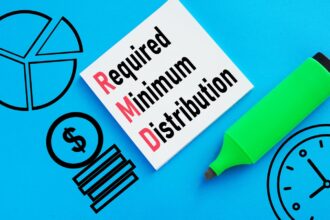Saving for retirement requires dedication and time. During those years, however, market movements will make significant jumps that you can then celebrate. And we’re in the middle of such a shift.
A recent Fidelity study highlights this very fact. According to a review of Fidelity 401(k) accounts, the number of participants with more than $1 million in assets within the account has increased by 15% in the first quarter of 2024, compared to end of 2023. This is a result of the market moving forward – it’s up 11% through 2024 and 25% over the past year.
All-in-all, the number of Fidelity 401(k)s holding $1 million or more reached 485,000, up from 422,000 at the end of 2023.
These 401(k) millionaires have used the market’s increases to boost their long-term savings, creating valuable assets for them in the future. But it didn’t happen overnight. In fact, most of the accounts were likely built over decades. We’re just seeing the impact that the latest market jump can provide.
Enjoying such a ride requires a strategy to incorporate savings into a 401(k) or other vehicle. To achieve that, you need to understand how to begin saving for the long term – or saving more for the long term. Too often, these strategies are forgotten, until some market swing encourages savers to recommit to their long-term plan.
These three strategies will allow you to build your savings while you wait for the next market boom.
Take Advantage Of The Match
Most 401(k) plans offer some level of match if you contribute a certain amount, like matching 100% of the first 4% of your salary that you contribute. Much of the advice around this is you should absolutely take advantage of the free money.
It goes further than that, though. When you’re hired, you’re given a salary package. The package includes your salary, but also all the additional perks and benefits you gain in the employment. Part of the salary package is the 401(k) match.
By not utilizing the match, you’re not just avoiding free money. You’re giving back part of your salary package. You’re essentially giving your employer money owed to you for the job you were hired for.
That’s not an ideal scenario. Instead, make sure to keep what you’re compensated for, and that includes the 401(k) match.
Incorporate The Savings
One reason that people struggle to save is they treat it as an afterthought. Instead of adding savings into the budget before all the spending that takes place, they relegate retirement for anything that may or may not be left over.
What ends up happening? Savings is never prioritized.
Instead, it’s important to incorporate the 401(k) or any savings at the very beginning of the process. This will allow you to determine what to spend money on, after you’ve taken care of things like saving.
To do this, consider the flow-based method to budgeting. In this method, you create three separate parts of your budget: fixed costs (those that occur every month at the same price), nonmonthly costs (those that occur a few times a year), and flex costs (essentially variable costs that change every month).
You begin with the fixed costs – determine how much will be spent each month. Then look at the non-monthly costs like vacations, vet bills or holiday gifts, and determine how much you need to save for these throughout the year, adding part of the paycheck to that savings line. This prevents unexpected costs to ruin your savings strategy. Finally, anything left goes toward flex costs.
By incorporating a specific amount for savings within the fixed costs line, you’re addressing it before you tackle any of your other spending. That will allow you to address your 401(k) before you ever think about going out to that expensive restaurant or buying that overpriced T-shirt.
Automate The Savings
One of the more powerful tools incorporated in the past several years for retirement savings was the use of automatic enrollments into 401(k)s for employees. Studies from the Center for Retirement Research at Boston College and elsewhere have found that it increases participation by a significant margin. Since businesses and 401(k) providers opted people in automatically, employees then had to take steps to opt out.
While they may not always like that they were forced to save, far fewer employees took the steps to opt out of the 401(k). Why? Because it was easy, and they didn’t want to take the steps to cease saving money.
You can use this same principle in your savings, whether it’s in the 401(k) or another retirement tool. By incorporating the savings, and then automating them, you will hardly notice that you made any contributions.
Instead, you’ll only feel the impact, once you see your net worth grow.
And if you’ve automated a bit too much in savings, then you can always adjust. But it’s better to feel a little uncomfortable now, and then experience the boost of success that comes while you invest as the market climbs.
But to win it, you have to be in it — it just may take a step or two to get started. Then, once you pass a personal milestone, make sure to celebrate your success.
Read the full article here










